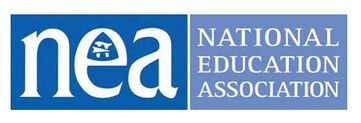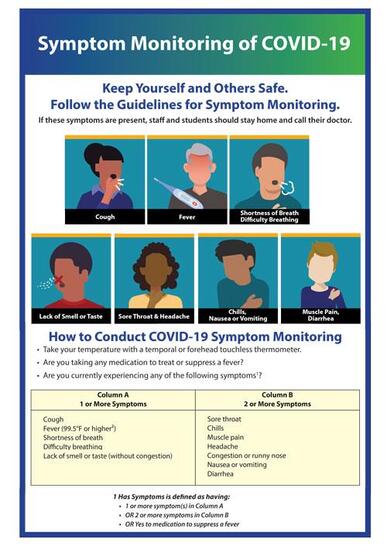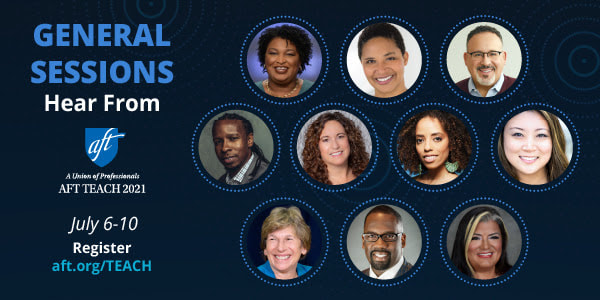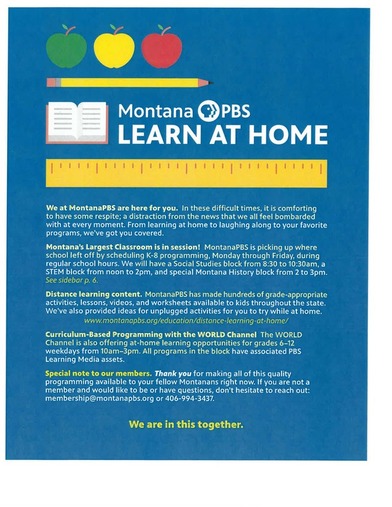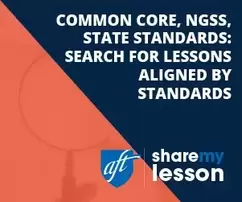Six Self-Care Tips for Teachers1. Reconnect with Nature
Before diving headfirst into the school year, take a moment to enjoy the beauty of nature. Spend time outdoors, whether it's a leisure walk in the park, a relaxing day in the pool, or planting a garden. Nature has a rejuvenating effect on the mind, helping you face new challenges with a fresh perspective. 2. Establish a Morning Ritual Create a peaceful morning routine that sets the tone for the rest of the day. Start with a few minutes of meditation or gentle stretching exercises to center your mind and body. Savor a nutritious breakfast and enjoy a cup of tea or coffee while setting positive intentions for the day ahead. 3. Pamper Yourself After weeks of hard work during the summer break, you deserve some pampering. Treat yourself to a spa day or indulge in a relaxing hobby, such as painting, reading, or playing a musical instrument. Taking time for yourself replenishes your energy and reduces stress. 4. Reflect and Set Goals Before the school year commences, take a moment to reflect on your previous academic journey. Identify accomplishments and areas of growth. Set realistic goals for the upcoming year, both personally and professionally. Creating a clear roadmap will give you a sense of direction and purpose. 5. Socialize and Connect Reconnect with colleagues and friends to share stories and experiences from the summer break. Building a supportive network within the teaching community can be invaluable for exchanging ideas and coping with challenges. 6. Create a Calming Workspace Design a serene and organized workspace to help you stay focused and maintain a sense of peace during busy school days. Personalize it with motivational quotes, plants, and photos that inspire and uplift your spirits. As the back-to-school buzz picks up momentum, remember that self-care is not a luxury; it's necessary for teachers to thrive in their professional roles. Embrace your self-care regimen, and let it be a guiding light throughout the upcoming academic year. By prioritizing your well-being, you'll be better equipped to support your students and create a positive and nurturing learning environment. GFEA and GFPS Ratify New ContractThe new contract between GFEA and GFPS has been ratified and School Board Approved for 2023-2025. Highlights of the changes include a 4% raise each of the next two years, an increase in hourly pay, additional personal days (and an increase in weekday usage limits) as well as two additional days for Special Education Teachers to do their paperwork. The new CBA should be available soon on the GFPS website. New CBA is in effect starting July 1, 2023. Download a copy at the link below.
Mental health is a serious matter.
| ||||||||||||||||||||||||
| covid19-tips-custodians030320.pdf | |
| File Size: | 197 kb |
| File Type: | |
Nine Strategies for effective online teaching
Pearson | March 24, 2020 in Higher Education
Many of us are having to move teaching quickly online (tips here if you are still setting up your course). Once you have your technology in place, take a deep breath. Teaching online requires different types of interactions with students.
We’ve simplified what works into nine strategies based on research that will help set you and your students up for success in your newly online course.
1. Know the technology
Many of us are having to move teaching quickly online (tips here if you are still setting up your course). Once you have your technology in place, take a deep breath. Teaching online requires different types of interactions with students.
We’ve simplified what works into nine strategies based on research that will help set you and your students up for success in your newly online course.
1. Know the technology
- This is new to everyone, so be prepared to troubleshoot and let your students know you are working on it. Take an hour to familiarize yourself with the technology. Most companies are offering additional training right now.
- Be very clear to students about where they should go for technical support (good digital technologies will have support services). Make the contact information readily available, and be prepared to direct students there if they come to you.
- At some point technology will fail, whether it is a video chat not connecting or assignment and/or resource links not working properly.
- Have a backup plan for all assignments and assessments that rely on technology.
- Be transparent in your communication to students about technology failure. For example, put a policy in place that outlines the actions students should take if they are unable to submit assignments due to technical issues.
- Don’t be afraid to solve technical challenges in real time, such as during synchronous discussions or collaborative real-time activities, to save time.
- Send a message to all students, by video if possible, to welcome them to online learning and reassure them.
- Use video chat rather than basic instant message when interacting with students.
- Get the students talking by beginning discussions in the discussion board, and then contributing rapid, regular, and open responses to questions.
- Use non-verbal communication such as emojis.
- Complete your profile with professional and personal traits.
- Online learning is new to the students as well. Make it clear to students how their grade in the course will be determined now (participation often makes up a much larger portion of the grade than in face to face classes).
- Set expectations for response time. For example, make it clear that you will respond to emails within one business day, otherwise students may expect you to answer an email within a few hours, and disengage if you don’t.
- Share resources for students on how to be an online learner. We have one from college students and from professors.
- 5. Establish a sense of comfort and develop a community of learners
- Students are looking to you to set the tone. Demonstrate enthusiasm and excitement about teaching the course to alleviate fear, anxiety, and isolation.
- Humanize yourself by posting a welcome video, a biography, photos that tell stories about what you are doing to keep busy during social isolation, links to news articles or video clips.
- Encourage each student to personalize their homepage and spend time going around the class asking students to share information about what they have posted.
- Incorporate instant messaging, web cameras, blogs and vlogs.
- Ask questions that empower participants to question each other, and elicit rich discussion.
- Respond to the community as a whole rather than directing all responses to individual participants outside of the community.
- 6. Promote reflection and communication through quality asynchronous discussion
- Return to posted topics that have not been fully discussed and promote contribution and reflection.
- Monitor participation and contact students individually if they are either not participating, or are taking over conversations and not permitting contributions from other individuals.
- 7. Have a good balance of active leader and active observer
- You will begin the course as the manager of the learning community. As the course progresses, slowly transfer the responsibility to the community of learners. The online community building steps in point 4 will help with this. You should also gradually retract further out of communal discussions.
8. Request regular feedback and be mindful of misinterpretation - Check in with your students to see how things are going. You can do formal or informal surveys to assess attitudes, workload and challenges. Make course correction as necessary — we’re all learning.
- Use ad hoc quizzes to assess learner comprehension of material.
- 9. Regularly check content resources and applications
- Regularly check all links, resources, modules, and activities. Online content can move or change, which can lead to disengagement.
- Assist students who are having difficulty navigating course links or managing the material spanning across various web pages.
- Model the process of navigating to websites that are not embedded in the course, and demonstrate how to appropriately manage keeping track of navigation when jumping from site to site.
- Summarized from the following article:
Smith, K. (2016). Toward an Understanding of Training to Teach Online: A Review of the Literature. Pearson Efficacy & Research.
AFT makes coronavirus resources available to members
The AFT is deeply involved in the response to the coronavirus, focusing on the health, safety and welfare of AFT members and the communities we serve; ensuring first responders are safe; and buffering working families from the economic impact of the crisis.
With every member affected in some way—from nurses to university faculty to public sector workers, teachers and school staff—we are constantly updating our resource page with research-based fact sheets, printable information on how to stay safe, division-specific guidelines and opportunities to take action and virtually advocate for things like personal protective equipment for nurses, closing the digital gap so all students can learn online and ensuring people are paid even if the pandemic has shuttered their workplace.
With every member affected in some way—from nurses to university faculty to public sector workers, teachers and school staff—we are constantly updating our resource page with research-based fact sheets, printable information on how to stay safe, division-specific guidelines and opportunities to take action and virtually advocate for things like personal protective equipment for nurses, closing the digital gap so all students can learn online and ensuring people are paid even if the pandemic has shuttered their workplace.

Prev
Who Loves You? Red Monster Loves You!
CREATIVITY
Next
Festival of the Impossible 2020: Call for Submissions Now Open
CREATIVITY
MFPE How to have a successful first year. Read more here

Remember, we are a merged union so you also have AFT access and member benefits. To learn more, click here.

Webinar Feb. 17: "A Primer on the Science of Reading"
As part of the AFT’s Reading Opens the World campaign, AFT national trainers are hosting a webinar on Share My Lesson tonight at 6:30 p.m. EST to examine the Simple View of Reading—a formula demonstrating that reading is the product of both decoding and language comprehension.
This webinar will break down each category into its component factors that contribute to developing successful young readers in grades K-5. The session is part of a free, for-credit webinar series running throughout 2022, designed to support educators helping all students become strong readers.
Help us spread the word so more educators can access this important professional learning. REGISTER
This webinar will break down each category into its component factors that contribute to developing successful young readers in grades K-5. The session is part of a free, for-credit webinar series running throughout 2022, designed to support educators helping all students become strong readers.
Help us spread the word so more educators can access this important professional learning. REGISTER
Explore Black History Month
AFT's Share My Lesson highlights resources
to help teach about Black history
Explore Black History Month ideas for your lesson planning with the AFT’s Share My Lesson’s curated collection of activities, blogs, webinars and more.
You’ll find everything you need to teach your preK-12 students about key events and individuals whose accomplishments continue to influence, inspire, and shape American society and the world today.
Use this link to discover some of AFT's most popular resources throughout the month of February:
sharemylesson.com/collections/black-history-month-lesson-plans?link_id=6&can_id=78b7ef37773b9340ff71ddf37c5d7ca3&source=email-aft-daily-communicatorfebruary-2-2022&email_referrer=email_1431380&email_subject=aft-daily-communicator-february-3-2022
You’ll find everything you need to teach your preK-12 students about key events and individuals whose accomplishments continue to influence, inspire, and shape American society and the world today.
Use this link to discover some of AFT's most popular resources throughout the month of February:
sharemylesson.com/collections/black-history-month-lesson-plans?link_id=6&can_id=78b7ef37773b9340ff71ddf37c5d7ca3&source=email-aft-daily-communicatorfebruary-2-2022&email_referrer=email_1431380&email_subject=aft-daily-communicator-february-3-2022
Valentine’s Day activities for high school and middle school ELA Students

Need some ideas for planning special Valentine’s Day activities to make both high school and middle school students feel considered?
Check out this website: https://buildingbooklove.com/valentines-day-activities-for-high/
Check out this website: https://buildingbooklove.com/valentines-day-activities-for-high/
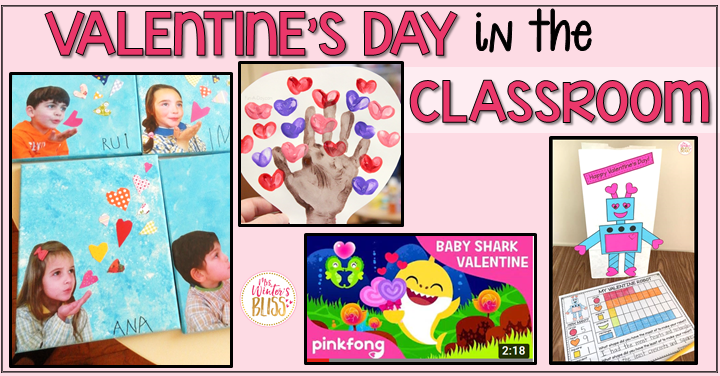
This website offers free resources for elementary students: https://mrswintersbliss.com/valentines-day-ideas-classroom/
MFPE will award two scholarships

MFPE will award
two 2022 – 2023 academic year scholarships
in the amount of $1,500 each.
One scholarship will be given to a new student, who has not previously enrolled in or attended any public Montana college or university. The other scholarship will be awarded to one continuing student, who is currently enrolled in and attending a public Montana college or university.
The students must be MFPE members or dependents
of MFPE members.
Application must include a personal statement,
letter of recommendation, summary of applicant’s community involvement
and financial need and academic transcripts.
DEADLINE: The application and all required documents must be received at MFPE headquarters by Monday, March 14, 2022.
Please mail or submit applications to the following:
MFPE
Attn: Scholarship Committee
1232 East Sixth Avenue
Helena, MT 59601
Download the Application
two 2022 – 2023 academic year scholarships
in the amount of $1,500 each.
One scholarship will be given to a new student, who has not previously enrolled in or attended any public Montana college or university. The other scholarship will be awarded to one continuing student, who is currently enrolled in and attending a public Montana college or university.
The students must be MFPE members or dependents
of MFPE members.
Application must include a personal statement,
letter of recommendation, summary of applicant’s community involvement
and financial need and academic transcripts.
DEADLINE: The application and all required documents must be received at MFPE headquarters by Monday, March 14, 2022.
Please mail or submit applications to the following:
MFPE
Attn: Scholarship Committee
1232 East Sixth Avenue
Helena, MT 59601
Download the Application
Thanksgiving Teaching Resources

Thanksgiving Lesson Plans that Challenge Our Perspectives
Get your students into the holiday spirit with the Great Thanksgiving Listen podcast, video-based activities, writing prompts and exciting history lessons and check out this special collection below!
Explore new ways to take your students on a historical journey this holiday season and help them discover the meaning of Thanksgiving. Share My Lesson’s curated collections of free, engaging preK-12 Thanksgiving lesson plan templates, resources and activities will help teach your students about this tradition from multiple historical perspectives, including a focus on studying indigenous people and endangered cultures.
Find resources to teach the history and reflect on the meaning of Thanksgiving in this collection of preK-12 favorites.
Share My Lesson
Get your students into the holiday spirit with the Great Thanksgiving Listen podcast, video-based activities, writing prompts and exciting history lessons and check out this special collection below!
Explore new ways to take your students on a historical journey this holiday season and help them discover the meaning of Thanksgiving. Share My Lesson’s curated collections of free, engaging preK-12 Thanksgiving lesson plan templates, resources and activities will help teach your students about this tradition from multiple historical perspectives, including a focus on studying indigenous people and endangered cultures.
Find resources to teach the history and reflect on the meaning of Thanksgiving in this collection of preK-12 favorites.
Share My Lesson
It Pays to be a Member
Check out MFPE, NEA and AFT benefits:
https://www.mfpe.org/benefits-of-membership/nea-aft-member-benefits/
https://www.mfpe.org/benefits-of-membership/nea-aft-member-benefits/
Student Loans

Student loan debt is one of the most serious financial challenges facing public employees today.
MFPE wants to help.
The NEA Student Loan Forgiveness Navigator tool, powered by Savi, helps MFPE members determine whether they’re eligible for federal student loan forgiveness programs and how much they could potentially reduce their loan debt. Phone and chat support also available.
Get Started
Need more information?
Please see Loan Forgiveness
https://www.mfpe.org/loanforgiveness/
MFPE wants to help.
The NEA Student Loan Forgiveness Navigator tool, powered by Savi, helps MFPE members determine whether they’re eligible for federal student loan forgiveness programs and how much they could potentially reduce their loan debt. Phone and chat support also available.
Get Started
Need more information?
Please see Loan Forgiveness
https://www.mfpe.org/loanforgiveness/
Labor Day is just around the corner

Happy first day of September!
Labor Day is right around the corner.
As a union, we value this holiday created
to honor workers, and Share My Lesson has free resources to help you teach about Labor Day, the labor movement and some of the key figures
in the movement.
Learn about the AFT’s history in the labor movement
as well as the history of Labor Day in the United States,
so you can share it with your students.
READ MORE...
https://sharemylesson.com/collections/labor-day-lesson-plans?link_id=6&can_id=78b7ef37773b9340ff71ddf37c5d7ca3&source=email-aft-daily-communicatoraugust-31-2021&email_referrer=email_1277080&email_subject=aft-daily-communicator-september-1-2021
Labor Day is right around the corner.
As a union, we value this holiday created
to honor workers, and Share My Lesson has free resources to help you teach about Labor Day, the labor movement and some of the key figures
in the movement.
Learn about the AFT’s history in the labor movement
as well as the history of Labor Day in the United States,
so you can share it with your students.
READ MORE...
https://sharemylesson.com/collections/labor-day-lesson-plans?link_id=6&can_id=78b7ef37773b9340ff71ddf37c5d7ca3&source=email-aft-daily-communicatoraugust-31-2021&email_referrer=email_1277080&email_subject=aft-daily-communicator-september-1-2021
Questions about course credits for Covid-19 preparation
Idaho State University Credits
- The maximum credits you can receive are 6 credits (they now offer up to 24 credits) for salary advancement with GFPS.
- You must fill out a prior approval form from GFPS Human Resources before taking the courses.
- Once you complete the course work you will have to request a transcript sent to Human Resources. They will process it and move you on the salary scale if you have enough credits. These credits do not count toward any advanced degrees.

AFT TEACH 2021 Tuesday, July 6, at 1 p.m. EDT
starts with a welcome session featuring a keynote by AFT President Randi Weingarten!
The agenda is packed with more than 60 sessions on essential topics covering social emotional learning, anti-racism, civic engagement and participation, and countless more tools and strategies you can use for the new school year. Plus, attendees can participate in five health and wellness sessions and two movie nights. Don’t delay; register now.
Have a friend or colleague who might be interested? Forward this message so they can join the fun!
BONUS: All workshops will be available on demand for 90 days starting July 6.
Registered attendees will hear from remarkable keynote speakers sharing their best practices and insights:
starts with a welcome session featuring a keynote by AFT President Randi Weingarten!
The agenda is packed with more than 60 sessions on essential topics covering social emotional learning, anti-racism, civic engagement and participation, and countless more tools and strategies you can use for the new school year. Plus, attendees can participate in five health and wellness sessions and two movie nights. Don’t delay; register now.
Have a friend or colleague who might be interested? Forward this message so they can join the fun!
BONUS: All workshops will be available on demand for 90 days starting July 6.
Registered attendees will hear from remarkable keynote speakers sharing their best practices and insights:
A Conversation with Dr. Ibram X. Kendi
Wednesday, July 7
6 p.m. EDT
Preparing Our Students: Civic Education, Engagement and Participation
Stacey Abrams, Founder, Fair Fight Action
Danielle Allen, Professor, Harvard University
Randi Weingarten, AFT President
Thursday, July 8
3:30 p.m. EDT
When the World Feels Heavy: Self-Care, Healing and Equity-Responsive Practices
Dena Simmons, Founder, LiberatED
Friday, July 9
3:30 p.m. EDT
The Future of Public Education
Cindy Marten, Deputy U.S. Secretary of Education
Fedrick Ingram, AFT Secretary-Treasurer
Evelyn DeJesus, AFT Executive Vice President
Saturday, July 10
10:30 a.m. EDT
Looking for Credit from New York and Illinois? Good news: Attendees from New York and Illinois will be able to earn Continuing Teacher and Leader Education (CTLE) and Illinois State Board of Education (ISBE) credit for their TEACH participation. Learn about registration details at https://www.aft.org/teach.
We look forward to seeing you online.
for their TEACH participation. Learn about registration details at https://www.aft.org/teach.
We look forward to seeing you online.
Register today for the third and final day of AFT Share My Lesson’s Virtual Conference!
(03.25.21)
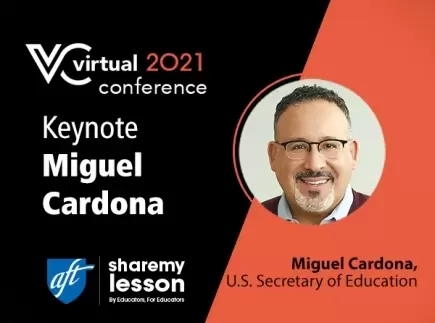
Join us for even more live, for-credit webinars running from 1 p.m. EDT until 9 p.m. EDT.
With 16 engaging, free sessions to choose from, you may see more that you want to participate in than you’ll have time for today. Good news: Register anyway. We’ll send you the link to access your favorite sessions on demand as soon as they are available, so you can enjoy them when the time is right for you.
Check out Thursday’s schedule:
With 16 engaging, free sessions to choose from, you may see more that you want to participate in than you’ll have time for today. Good news: Register anyway. We’ll send you the link to access your favorite sessions on demand as soon as they are available, so you can enjoy them when the time is right for you.
Check out Thursday’s schedule:
- The Fighting Spirit And Overcoming Challenging Times at 1 p.m. EDT with today’s sponsor U.S. Marine Corps
- Six Steps to Accelerate Student Learning in PreK-5 at 1 p.m. EDT with Springboard Collaborative
- The Intersection of Civic Engagement, Digital Citizenship and Social Media at 2 p.m. EDT with Nearpod, Common Sense Education, iCivics and LAUSD
- Storytelling to Change the World and Our Students in Grades 6-12 at 2 p.m. EDT with Blueshift Education
- Authentic Ways of Representing American Indian Culture in PreK-12 School Curriculum at 3 p.m. EDT with AFT and the National Indian Education Association
- Is it Fake News? Identify and Address the Continuum of Disinformation and Other "False" News at 3 p.m. EDT with ADL
- Student Voice in K-12: Photography, History and Memory During COVID-19 at 4 p.m. EDT with Global Oneness Project
- Bringing Disney Magic to Your Classroom at 4 p.m. EDT with The Walt Disney Company
- Keynote: Priorities to Support Our Students: A Conversation with U.S. Secretary of Education Miguel Cardona at 5 p.m. EDT with AFT President Randi Weingarten
- Teaching Migration with a Social Justice Lens for Secondary School at 6 p.m. EDT with Re-Imagining Migration
- Societal Trauma and Social Fatigue: Trauma-Informed Care Strategies for You and Your Students at 6 p.m. EDT with Cara-Leigh Battaglia
- 9/11 to COVID-19: Using Narratives of Resilience to Connect Historical Turning Points at 6 p.m. EDT with 9/11 Memorial and Museum
- Anti-Racism Resources for Schools and Classrooms at 7 p.m. EDT with WE Schools
- SEL in a World of Social Media for Grades 6-12 at 7 p.m. EDT with Common Sense Education
- Journalism in Action: Teaching Key Moments in History with PBS at 8 p.m. with PBS NewsHour Extra
- Shakespeare to Malcolm X: Helping ALL Students Grapple with Race and Complex Texts at 8 p.m. with Folger Shakespeare Library
- You will be eligible to receive one hour of professional development credit for participation in each webinar if you complete all the poll questions, survey and actively watch the webinar. A certificate of completion will then be available for download at the end of each of your sessions. You may choose to check with your school district in advance to ensure that the PD credit is accepted.
- NEW for 2021: AFT Share My Lesson is now a New York State Education Department-approved provider for Continuing Teacher and Leader Education (CTLE) requirements. Step 1: Upon completion of the Share My Lesson webinar, download your PD certificate of completion. Step 2: Complete your CTLE certificate. Step 3: Send both your CTLE certificate and Share My Lesson PD certificate of completion to [email protected].
- If you can’t make a webinar time, register anyway! We’ll automatically email you the on-demand link as soon as it’s available. The on-demand versions will be available in closed captioning in English and Spanish.
Kids' Chance of Montana provides scholarship opportunity
Kids' Chance of Montana provides scholarships to students who have had a parent killed or severely injured on the job.
Follow the link to the Kids' Chance scholarship application:
https://www.kidschanceofmontana.org/
The 2021 application deadline: March 31, 2021.
Eligibility criteria is quite minimal beyond having had a parent suffer a significant workplace injury or fatality. The scholarships can be used toward two year and four year colleges/universities, technical/career education, and self and remote study opportunities.
Kids' Chance scholarships are renewable.
In the past three years, Kids' Chance of MT has awarded approximately $66,000 in scholarships, ranging from $1,000-$3,500 each.
Visit the following link for more information: http://www.kidschanceofmontana.org/
Follow the link to the Kids' Chance scholarship application:
https://www.kidschanceofmontana.org/
The 2021 application deadline: March 31, 2021.
Eligibility criteria is quite minimal beyond having had a parent suffer a significant workplace injury or fatality. The scholarships can be used toward two year and four year colleges/universities, technical/career education, and self and remote study opportunities.
Kids' Chance scholarships are renewable.
In the past three years, Kids' Chance of MT has awarded approximately $66,000 in scholarships, ranging from $1,000-$3,500 each.
Visit the following link for more information: http://www.kidschanceofmontana.org/
It's time to apply
for the MFPE Educators' Scholarship
The Montana Federation of Public Employees Scholarship is awarded at the MFPE Annual Conference to a student who has met all of the requirements in either Category 1 or Category 2 and who has demonstrated academic achievement, financial need, community involvement and/or extracurricular activity.
The application packet can be found at the bottom of this article.
CATEGORY 1 – Public Employee (student)
1. Active member of MFPE.
2. Currently enrolled or accepted for study during the upcoming academic year at an accredited 2 or 4-year public Montana college or university.
3. Intend to register/have registered for at least half-time undergraduate or graduate study in a higher education program leading to a degree/certificate.
4. Achieved a minimum cumulative grade point average of 3.5 or higher.
CATEGORY 2 – Student with Required Sponsor
1. Sponsor is an active member of MFPE (parent or legal guardian of student).*
2. Currently enrolled or accepted for study during the upcoming academic year at an accredited public 2 or 4-year public college or university In Montana.
3. Registered in a higher education program leading to a degree/certificate.
4. Achieved a minimum cumulative grade point average of 3.5 or higher.
*A dependent child/legal ward must be unmarried and age 25 or younger.
APPLICANTS
All applicants are considered for a one-time-only award. Once an award is received applicants are no longer eligible for future consideration. Applications will be separated into two (2) areas for consideration with one scholarship being awarded from each.
New Student ($1,500 scholarship)
This student has not previously enrolled/attended any college. They must have graduated from a Montana public high school with a minimum GPA of 3.5.
Continuing Student ($1,500 scholarship)
Currently enrolled students must have a minimum GPA of 3.5.
APPLICATION PACKET REQUIREMENTS (To be completed by the student.)
1. Scholarship Application: Complete the application form in its entirety.
2. Personal Statement: Summarize why collective bargaining is important, what MFPE means to you and/or your family, and how this scholarship will affect you personally. Limit statement to 1-2 pages.
3. Letter of Recommendation: Submit one letter from an instructor, employer, supervisor, etc.
4. Current Transcripts: New freshmen must submit a current high school transcript. Continuing student must submit the most recent college transcript.
DEADLINE:
The application and all required documents must be received at MFPE headquarters by Monday, March 15, 2021.
Please mail or submit to:
MFPE, Attn: Scholarship Committee
1232 East Sixth Avenue, Helena, MT 59601
The application packet can be found at the bottom of this article.
CATEGORY 1 – Public Employee (student)
1. Active member of MFPE.
2. Currently enrolled or accepted for study during the upcoming academic year at an accredited 2 or 4-year public Montana college or university.
3. Intend to register/have registered for at least half-time undergraduate or graduate study in a higher education program leading to a degree/certificate.
4. Achieved a minimum cumulative grade point average of 3.5 or higher.
CATEGORY 2 – Student with Required Sponsor
1. Sponsor is an active member of MFPE (parent or legal guardian of student).*
2. Currently enrolled or accepted for study during the upcoming academic year at an accredited public 2 or 4-year public college or university In Montana.
3. Registered in a higher education program leading to a degree/certificate.
4. Achieved a minimum cumulative grade point average of 3.5 or higher.
*A dependent child/legal ward must be unmarried and age 25 or younger.
APPLICANTS
All applicants are considered for a one-time-only award. Once an award is received applicants are no longer eligible for future consideration. Applications will be separated into two (2) areas for consideration with one scholarship being awarded from each.
New Student ($1,500 scholarship)
This student has not previously enrolled/attended any college. They must have graduated from a Montana public high school with a minimum GPA of 3.5.
Continuing Student ($1,500 scholarship)
Currently enrolled students must have a minimum GPA of 3.5.
APPLICATION PACKET REQUIREMENTS (To be completed by the student.)
1. Scholarship Application: Complete the application form in its entirety.
2. Personal Statement: Summarize why collective bargaining is important, what MFPE means to you and/or your family, and how this scholarship will affect you personally. Limit statement to 1-2 pages.
3. Letter of Recommendation: Submit one letter from an instructor, employer, supervisor, etc.
4. Current Transcripts: New freshmen must submit a current high school transcript. Continuing student must submit the most recent college transcript.
DEADLINE:
The application and all required documents must be received at MFPE headquarters by Monday, March 15, 2021.
Please mail or submit to:
MFPE, Attn: Scholarship Committee
1232 East Sixth Avenue, Helena, MT 59601
| mfpe-scholarship-applicant-instructions_2021.pdf | |
| File Size: | 221 kb |
| File Type: | |
Supporting Social Emotional Learning during Covid-19
Nearly a year into the pandemic, students nationwide are navigating unprecedented challenges. This additional strain is of great concern to teachers, making supporting social and emotional learning (SEL) more important than ever. While we hope that an effective vaccine will soon be widely available, we know that emotional and economic recovery will take time. With support, students can develop skills, such as processing feelings in a healthy manner, that will benefit them for life. In this light, we feature several resources for SEL available through Share My Lesson.
A Pandemic-Related Priority
An essential first step to supporting students’ learning is addressing the emotional impact of COVID-19. In the Share My Lesson webinar “Helping Children Regulate Emotions During Challenging Times,” Marc Brackett, director of the Yale Center for Emotional Intelligence, unpacks how adults can support children in validating and managing their feelings. The webinar includes practical strategies for self-regulation and case studies that can spark discussions and help students grow.
Similarly, the webinar “Fostering SEL and Self-Care for Our Students in the Coronavirus Era” focuses on positive ways students from preschool through high school can handle stress and anxiety. Presented by Victoria Cheng-Gorini of Morningside Center for Teaching Social Responsibility, a Share My Lesson partner, the webinar offers guidelines for discussing difficult feelings and healthy ways to express them, such as through art, music, writing, and physical activities. For educators and caregivers facing pandemic-related stress in their own lives, the webinar also emphasizes the importance of self-care routines.
For those students who are grieving a loved one lost to COVID-19, the Coalition to Support Grieving Students, to which the AFT belongs, offers educators a free, comprehensive guide to its video and print resources. These include modules on connecting with families remotely and understanding grief triggers as well as information on organizations that support bereaved children and their families. Together, we can ensure that no student grieves alone.
Throughout the pandemic, it’s crucial to ensure the educator-student bond remains strong. To that end, the webinar “Comprehensive Whole Child Development: SEL Tools for In-Person and Distance Learning” shows teachers how to bolster these connections. Presented by Jessica Jackson of Digital Promise, Rachael Wilcox of the Francis Howell School District, and Share My Lesson, the webinar offers constructive ways to help students manage their time and emotions.
Supporting Social Emotional Learning Beyond COVID-19 Supporting Social Emotional Learning During COVID-19
Even outside the context of the pandemic, studies find that nearly half of all young people have experienced childhood trauma; without a caring adult offering assistance, trauma can impede children’s social and emotional development.
To support these students, educators can turn to a lesson titled “How to Help Students Below Their Age Appropriate Developmental Level for Social Emotional Learning.” Provided by AFT partner First Book, the lesson is an excerpt of its “Trauma Toolkit,” a free guide on what educators should know about adverse childhood experiences and ways to support student learning after trauma.
To help children in grades K–2 in developing social and emotional skills, Share My Lesson partner Discovery Education offers the lesson “Soar with Wings.” The detailed, multiday modules use role-play to help students manage emotions and engage in responsible decision-making.
Another productive strategy students can use when they feel upset or angry comes from Share My Lesson partner Operation Respect. In a lesson titled “Creating a Peace Place,” students figure out alternatives to inappropriate behavior, establish calming-down strategies, and cooperate with others to create a space in the classroom where they can self-regulate and feel better. Geared toward students in kindergarten through fifth grade, the lesson also includes modifications for students in grades six through twelve.
To see what other resources Share My Lesson offers for supporting social emotional learning, visit our entire collection of lesson plans, resources, and activities. If you have additional ideas or requests, please reach out to us at [email protected].
A Pandemic-Related Priority
An essential first step to supporting students’ learning is addressing the emotional impact of COVID-19. In the Share My Lesson webinar “Helping Children Regulate Emotions During Challenging Times,” Marc Brackett, director of the Yale Center for Emotional Intelligence, unpacks how adults can support children in validating and managing their feelings. The webinar includes practical strategies for self-regulation and case studies that can spark discussions and help students grow.
Similarly, the webinar “Fostering SEL and Self-Care for Our Students in the Coronavirus Era” focuses on positive ways students from preschool through high school can handle stress and anxiety. Presented by Victoria Cheng-Gorini of Morningside Center for Teaching Social Responsibility, a Share My Lesson partner, the webinar offers guidelines for discussing difficult feelings and healthy ways to express them, such as through art, music, writing, and physical activities. For educators and caregivers facing pandemic-related stress in their own lives, the webinar also emphasizes the importance of self-care routines.
For those students who are grieving a loved one lost to COVID-19, the Coalition to Support Grieving Students, to which the AFT belongs, offers educators a free, comprehensive guide to its video and print resources. These include modules on connecting with families remotely and understanding grief triggers as well as information on organizations that support bereaved children and their families. Together, we can ensure that no student grieves alone.
Throughout the pandemic, it’s crucial to ensure the educator-student bond remains strong. To that end, the webinar “Comprehensive Whole Child Development: SEL Tools for In-Person and Distance Learning” shows teachers how to bolster these connections. Presented by Jessica Jackson of Digital Promise, Rachael Wilcox of the Francis Howell School District, and Share My Lesson, the webinar offers constructive ways to help students manage their time and emotions.
Supporting Social Emotional Learning Beyond COVID-19 Supporting Social Emotional Learning During COVID-19
Even outside the context of the pandemic, studies find that nearly half of all young people have experienced childhood trauma; without a caring adult offering assistance, trauma can impede children’s social and emotional development.
To support these students, educators can turn to a lesson titled “How to Help Students Below Their Age Appropriate Developmental Level for Social Emotional Learning.” Provided by AFT partner First Book, the lesson is an excerpt of its “Trauma Toolkit,” a free guide on what educators should know about adverse childhood experiences and ways to support student learning after trauma.
To help children in grades K–2 in developing social and emotional skills, Share My Lesson partner Discovery Education offers the lesson “Soar with Wings.” The detailed, multiday modules use role-play to help students manage emotions and engage in responsible decision-making.
Another productive strategy students can use when they feel upset or angry comes from Share My Lesson partner Operation Respect. In a lesson titled “Creating a Peace Place,” students figure out alternatives to inappropriate behavior, establish calming-down strategies, and cooperate with others to create a space in the classroom where they can self-regulate and feel better. Geared toward students in kindergarten through fifth grade, the lesson also includes modifications for students in grades six through twelve.
To see what other resources Share My Lesson offers for supporting social emotional learning, visit our entire collection of lesson plans, resources, and activities. If you have additional ideas or requests, please reach out to us at [email protected].

Foundations
of Democracy
#8 Collection of 2018
sharemylesson.com
https://sharemylesson.com/collections/foundations-democracy
of Democracy
#8 Collection of 2018
sharemylesson.com
https://sharemylesson.com/collections/foundations-democracy
For two centuries, American political offices have peacefully transferred power after every election. Try this resource from @sharemylesson for middle & high school.
https://sharemylesson.com/teaching-resource/peaceful-transfer-power-infographic-327959
https://sharemylesson.com/teaching-resource/peaceful-transfer-power-infographic-327959

Peaceful Transfer of Power Infographic | Share My Lesson
Peaceful Transfer of Power Infographic lesson plan template and teaching resources. For over two centuries, American political offices have peacefully transferred power after every election.
sharemylesson.com
Peaceful Transfer of Power Infographic lesson plan template and teaching resources. For over two centuries, American political offices have peacefully transferred power after every election.
sharemylesson.com
WINTER EDUCATOR ACADEMY 2021
Attend AFT's virtual
Professional Learning Fair
December 8
The AFT’s signature Summer Educator Academy is extending into winter! We will be offering a series of mini-courses starting in January 2021. These courses are not a train-the-trainer model but will provide just-in-time strategies for teaching and learning in the remote world.
Professional Learning Fair, Dec. 8 at 6 p.m. EST
Join AFT National Trainers for a special, interactive virtual fair on Dec. 8 to preview the courses being offered. You'll have an opportunity to meet the trainers and AFT staff, and learn more about the different courses that interest you with live, small-group conversations. You get to choose your own professional learning adventure! Register and select FOUR courses you'd like to explore more.
See Course Descriptions for more details
on these courses:
Special Courses:
New Teachers and New Teacher Leaders
Professional Learning Fair, Dec. 8 at 6 p.m. EST
Join AFT National Trainers for a special, interactive virtual fair on Dec. 8 to preview the courses being offered. You'll have an opportunity to meet the trainers and AFT staff, and learn more about the different courses that interest you with live, small-group conversations. You get to choose your own professional learning adventure! Register and select FOUR courses you'd like to explore more.
See Course Descriptions for more details
on these courses:
- 10 Trauma-Informed Strategies to Help Students Heal
- The Classroom Management Puzzle: Putting the Pieces Together
- Developing Problem-Solving Strategies with Bar Models: Winter Virtual Edition
- Differentiating Instruction
- ELL 101 Special Virtual Edition: Planning for the Success of ELLs
- Every Child Needs a Champion: Unlock Your Ability to Build Online Caring Relationships
- Meeting Writing Expectations in the K-5 Classroom: Recommendations for Improving Writing Instruction
- Real Talk
- Simple View of Reading: One Lens at a Time, the Full Picture
- Teach Them to Think
- What You Get Is What You Expect
Special Courses:
New Teachers and New Teacher Leaders
- The Classroom Management Puzzle: Putting the Pieces Together
- Differentiating Instruction
- Every Child Needs a Champion: Unlock Your Ability to Build Online Caring Relationships
- Real Talk
- Teach Them to Think
- What You Get Is What You Expect
Webinars on preparing your classroom for distance learning
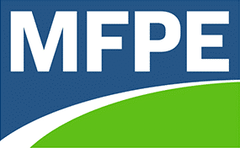
Did you miss our recent webinars
on how to prepare
for distance learning?
No problem!
You can watch (or re-watch) any one
of our distance learning webinars here.
Webinar 1: Planning for a Week of Distance Learning
Webinar 2: Facilitating Quality Practice
Webinar 3: Accommodations and Scaffolding Online
Be sure to join MFPE in partnership with NEA for our next webinar: Wellness Skills for Self-care and Health
for Educational Support Professionals: Providing Accommodations and Scaffolding Online
Register
on how to prepare
for distance learning?
No problem!
You can watch (or re-watch) any one
of our distance learning webinars here.
Webinar 1: Planning for a Week of Distance Learning
Webinar 2: Facilitating Quality Practice
Webinar 3: Accommodations and Scaffolding Online
Be sure to join MFPE in partnership with NEA for our next webinar: Wellness Skills for Self-care and Health
for Educational Support Professionals: Providing Accommodations and Scaffolding Online
Register
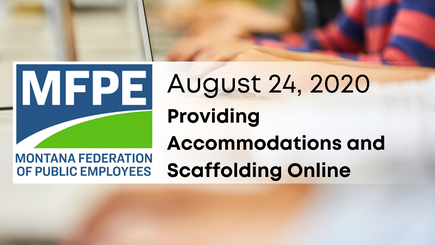
How do you support students with IEPs, English language learners, and older students with developing literacy skills in an asynchronous distance learning environment? Using Google Classroom, learn strategies for providing accommodations, scaffolds, SIOP features, and elements of explicit instruction in an asynchronous setting that support all students.
Register Here
Register Here
Join MFPE in partnership with NEA for a series of webinars on how to prepare a distance learning classroom. Register for one or both!
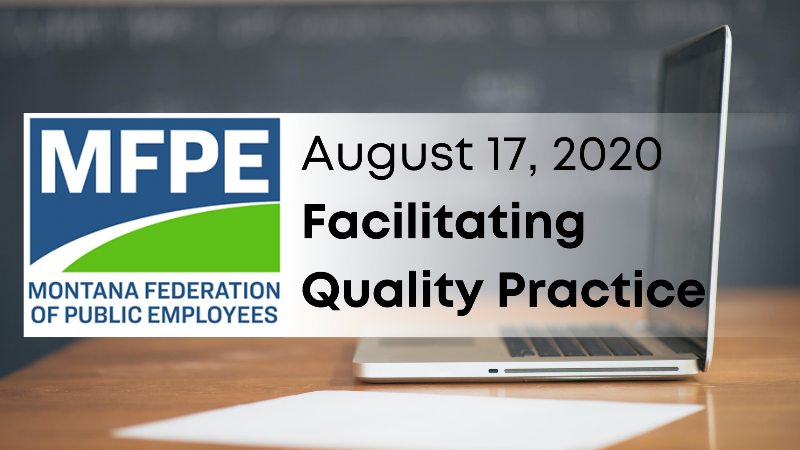
Quality practice looks, sounds, and feels different virtually. Let's practice with tools that teachers and paraeducators can use with students. We will learn about best practices for online learning, including instructor presence, learning objectives, real world applications, clear expectations, engaging students, prompt feedback, and netiquette. We will focus on two platforms: Seesaw and Google Classroom.
Register Here
MFPE Member Lucas Logan has had
his Student Loans Forgiven

You Could, Too!
MFPE member Lucas Logan is now free of his student debt thanks to a partnership between MFPE and Savi, a student loan forgiveness tool. For ten years, Logan tried to have his debt forgiven under the federal student loan forgiveness program, but was rejected again and again. Unfortunately, his story is all too common. In 2019, Forbes reported that “99% of requests for a federal student loan forgiveness program were denied.”
Logan, an educator in the Shepard School District since 2009, says he started the application process with his student loan lender 10 years ago, but each application was denied. In 2019, Logan attended the MFPE Educator Conference in Belgrade where he met a representative from Savi. “I had turned in about four applications with another company, and they could never tell me what I was doing wrong,” says MFPE member Logan. “So, that’s why I attended the student loan forgiveness session in Belgrade.”
The difference was remarkable.
Through Savi, a tool offered by MFPE to MFPE members, Logan received expert assistance and re-submitted his loan forgiveness application. “I got a letter in the mail and then read it and walked into the bedroom,” says Logan. “I had no idea what was happening to me and tears were falling down my face. My puppy was blubbering, and my wife thought someone passed away. By this point I said, ‘No. They forgave all of it.’ And that was it.”
After 10 years of hitting a wall, Lucas Logan is finally free of his student debt thanks to this new and unique tool offered through MFPE. “It’s been over a 10 year process trying to apply to this and Savi got it done in under a year,” says Logan. “I was ready to just give up.”
The difference it’s made in his life has already been remarkable. He’s now investing in household improvements and his daughter’s college fund.
If you are an MFPE member, you can access Savi here at no cost.
In addition to providing tools like Savi, MFPE recently won a major victory in court for public employees saddled with student loan debt.
MFPE members are not only entitled to NEA member benefits, but to AFT members benefits, as well. AFT has its own student debt management tool called Summer. The average savings for MFPE members using Summer is $48,600! Learn more about Summer by clicking here.
MFPE members are entitled to a wide range
of benefits.
Learn more by clicking here.
MFPE member Lucas Logan is now free of his student debt thanks to a partnership between MFPE and Savi, a student loan forgiveness tool. For ten years, Logan tried to have his debt forgiven under the federal student loan forgiveness program, but was rejected again and again. Unfortunately, his story is all too common. In 2019, Forbes reported that “99% of requests for a federal student loan forgiveness program were denied.”
Logan, an educator in the Shepard School District since 2009, says he started the application process with his student loan lender 10 years ago, but each application was denied. In 2019, Logan attended the MFPE Educator Conference in Belgrade where he met a representative from Savi. “I had turned in about four applications with another company, and they could never tell me what I was doing wrong,” says MFPE member Logan. “So, that’s why I attended the student loan forgiveness session in Belgrade.”
The difference was remarkable.
Through Savi, a tool offered by MFPE to MFPE members, Logan received expert assistance and re-submitted his loan forgiveness application. “I got a letter in the mail and then read it and walked into the bedroom,” says Logan. “I had no idea what was happening to me and tears were falling down my face. My puppy was blubbering, and my wife thought someone passed away. By this point I said, ‘No. They forgave all of it.’ And that was it.”
After 10 years of hitting a wall, Lucas Logan is finally free of his student debt thanks to this new and unique tool offered through MFPE. “It’s been over a 10 year process trying to apply to this and Savi got it done in under a year,” says Logan. “I was ready to just give up.”
The difference it’s made in his life has already been remarkable. He’s now investing in household improvements and his daughter’s college fund.
If you are an MFPE member, you can access Savi here at no cost.
In addition to providing tools like Savi, MFPE recently won a major victory in court for public employees saddled with student loan debt.
MFPE members are not only entitled to NEA member benefits, but to AFT members benefits, as well. AFT has its own student debt management tool called Summer. The average savings for MFPE members using Summer is $48,600! Learn more about Summer by clicking here.
MFPE members are entitled to a wide range
of benefits.
Learn more by clicking here.
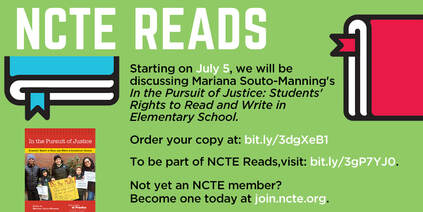
Join Us for the 4th Summer of NCTE Reads!
We are inviting all current NCTE members to participate in a monthlong discussion via a private Facebook group where they’ll have the chance to discuss ideas from the book, ask questions of the author and contributors, and create new resources together.
Starting on July 5, we will be discussing this year’s text, In the Pursuit of Justice: Students’ Rights to Read and Write in Elementary School,
edited by Mariana Souto-Manning.
Sign up here: https://ncte.org/events/ncte-reads/
We are inviting all current NCTE members to participate in a monthlong discussion via a private Facebook group where they’ll have the chance to discuss ideas from the book, ask questions of the author and contributors, and create new resources together.
Starting on July 5, we will be discussing this year’s text, In the Pursuit of Justice: Students’ Rights to Read and Write in Elementary School,
edited by Mariana Souto-Manning.
Sign up here: https://ncte.org/events/ncte-reads/
AFT shares Memorial Day lesson plans

Updated on May 2020
IN THIS COLLECTION: Find new ways to discover the meaning of Memorial Day with your students using the free K-12 resources in this curated collection from Share My Lesson.
The lessons and activities honor military men and women who died while on duty and explore the wars they served in, as well as the impact on their families and our country.
Memorial Day is observed on the final Monday of May. The holiday was originally known as Decoration Day, a time when Americans remembered those who died during the Civil War. During the 20th century, it was expanded to include all wars. Memorial Day was declared a federal holiday in 1968.
For additional materials:
https://sharemylesson.com/collections/memorial-day?utm_source=SilverpopMailing&utm_medium=email&utm_campaign=enews_051720_memday_verizon%20(1)%20remainder&utm_content=&spMailingID=42519045&spUserID=OTg5MTIyMjY4MzU1S0&spJobID=1761627816&spReportId=MTc2MTYyNzgxNgS2
IN THIS COLLECTION: Find new ways to discover the meaning of Memorial Day with your students using the free K-12 resources in this curated collection from Share My Lesson.
The lessons and activities honor military men and women who died while on duty and explore the wars they served in, as well as the impact on their families and our country.
Memorial Day is observed on the final Monday of May. The holiday was originally known as Decoration Day, a time when Americans remembered those who died during the Civil War. During the 20th century, it was expanded to include all wars. Memorial Day was declared a federal holiday in 1968.
For additional materials:
https://sharemylesson.com/collections/memorial-day?utm_source=SilverpopMailing&utm_medium=email&utm_campaign=enews_051720_memday_verizon%20(1)%20remainder&utm_content=&spMailingID=42519045&spUserID=OTg5MTIyMjY4MzU1S0&spJobID=1761627816&spReportId=MTc2MTYyNzgxNgS2
BROUGHT TO YOU BY THE U.S. CENSUS BUREAU
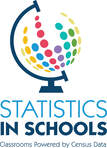
Make a Difference for Your Students and Community
Statistics in Schools Week is March 2-6! Educators can use free, downloadable activities for the five daily themes related to the 2020 Census. Find out more at census.gov/schools.
Get Resources
Statistics in Schools Week is March 2-6! Educators can use free, downloadable activities for the five daily themes related to the 2020 Census. Find out more at census.gov/schools.
Get Resources
|
Now more than ever, we recognize the importance of educators all over the world.
Day in and day out, teachers provide one of the most important services to our communities: care, attention, and support to children and students everywhere. As leaders doing the challenging work of developing the future minds of the world, we want to extend our deepest and most sincere appreciation to all of you. For Teacher Appreciation Week this May (4–8), we invite you to take part in the following activities NCTE has created just for you. In this particularly stressful time, we seek to support as well as celebrate all you contribute to our world. Please consider joining us at one or all of the special engagements. CALENDAR OF EVENTS We are excited to announce the #tomyteacher campaign! Through a series of video messages, some of today’s most beloved writers will tell personal stories of appreciation for teachers who had a profound impact on their lives. People are encouraged to share one or more of the author messages or post their own message to social media with the hashtag #tomyteacher. Stay tuned for an announcement Monday morning involving beloved writers speaking up with their teacher appreciation stories! |
|
Happy Women's History Month!
We're celebrating women authors all month long and have compiled this list of resources to help you do the same in your classrooms. In honor of International Women’s Day and Women’s History Month, check out the NCTE books and resources written by some incredible women. In this blog post, Jocelyn A. Chadwick, NCTE Past President, shares her reflections on “Legacy of Pride: Women and NCTE." This Build Your Stack blog post consists of books all written in free verse and shows that the fight for equality has been a continuous journey for women.This post shares the understanding that authors need to support each other’s lived experiences, narratives, and voices. [Editor’s Note: We understand many schools and students cannot rely on virtual learning during the closures because many in our communities do not have access to it for a variety of reasons. We will address issues of equity in subsequent articles.]
BY JACQUI MURRAY My inbox–probably yours, too–is flooded with suggestions, how-tos, and don’t-dos, on teaching online as a strategy for dealing with COVID-19. As I received the onslaught of teach-online resources, I collected those that made the most sense. Below is a short curation of the most useful articles, links, resources, and webinars to help you through this challenging environment, followed by some tips and answers to common questions. Online articles Resources, tips and more for remote and e-learning (teaching online) — from Educational Technology Guy Tools to prepare for school closures–suggested by Common Sense Advice for new Online Teachers–from EdSurge Navigating Uncertain Times: How Schools Can Cope With Corona virus–from EdSurge Understanding the Impact of Coronavirus on K-12 Education–from EdSurge Newsela COVID-19 resource center (and free access to their paid products this school year) A live-tracker of the spread of the disease from Johns Hopkins University. Snow Day? 7 Ways to Keep Teaching An Open Letter to Teachers About Online Classes Remote Learning: Tips for Thriving in This Ecosystem Online webinarsOne of the best I’ve watched in the last few weeks (as I dig into this subject) is Rushton Hurley’s. Here are some great suggestions for teachers who have to start fast with little preparation: Here are three webinars from the knowledgeable Richard Byrne: Three Free Webinars About Transitioning to Teaching Online Distance Learning Strategies for Education Leaders, Part 1 Date: March 17th, 2020 Distance Learning Strategies for Education Leaders, Part 2 Date: March 20th, 2020 A short curated list of resources for teaching online:How-to
If you’re still with me, here are quick notes on questions I’ve gotten from fellow educators over the past week or so: What can you as a parent do in advance?
What are the biggest problems I face moving my teaching online:
What should students and families know before their first online session:
Schools and Coronavirus: What You Should Know Find general guidance on COVID-19 from the Centers for Disease Control and Prevention, the World Health Organization, and other health organizations, in addition to resources for navigating schools closures and online learning. NEA is committed to ensuring the health and safety of its members and the students they serve and will continue to monitor the situation and provide updates as they become available. Jacqui Murray has been teaching K-18 technology for 30 years. She is the editor/author of over a hundred tech ed resources including a K-12 technology curriculum, K-8 keyboard curriculum, K-8 Digital Citizenship curriculum. She is an adjunct professor in tech ed, Master Teacher, webmaster for four blogs, an Amazon Vine Voice, CSTA presentation reviewer, freelance journalist on tech ed topics, contributor to NEA Today, and author of the tech thrillers, To Hunt a Sub and Twenty-four Days. You can find her resources at Structured Learning. For more information: http://neatoday.org/2020/03/16/resources-for-online-learning-during-school-closures/utm_source=nea_today&utm_medium=email&utm_campaign=20200318&utm_content=online_learning |
Digital Learning Day:
Practical Life and Work Skills for Students
February 27, 2020
Today is Digital Learning Day—a day to spread innovative teaching practices and help young people everywhere access high-quality digital learning opportunities. This year, the event is all about sparking innovation in every classroom, every day. As part of the celebration, Google’s Applied Digital Skills curriculum is excited to launch new curated Digital Learning Day lesson collections to help students explore new digital skills they will need in life and in their future careers, including lessons on creating a resume, exploring their digital footprint, creating a presentation about a topic, and more.
https://sharemylesson.com/blog/digital-learning-day?link_id=12&can_id=78b7ef37773b9340ff71ddf37c5d7ca3&source=email-aft-daily-communicatorfebruary-26-2020&email_referrer=email_735521&email_subject=aft-daily-communicator-february-27-2020
Today is Digital Learning Day—a day to spread innovative teaching practices and help young people everywhere access high-quality digital learning opportunities. This year, the event is all about sparking innovation in every classroom, every day. As part of the celebration, Google’s Applied Digital Skills curriculum is excited to launch new curated Digital Learning Day lesson collections to help students explore new digital skills they will need in life and in their future careers, including lessons on creating a resume, exploring their digital footprint, creating a presentation about a topic, and more.
https://sharemylesson.com/blog/digital-learning-day?link_id=12&can_id=78b7ef37773b9340ff71ddf37c5d7ca3&source=email-aft-daily-communicatorfebruary-26-2020&email_referrer=email_735521&email_subject=aft-daily-communicator-february-27-2020
How Refining Definitions
of Digital Literacy Emphasizes Student Needs
Fracturing digital literacy.
Sidney I. Dobrin POSTED ON 02-10-2020
Adobe Blog
One of the great things that emerged simultaneously with the development of Adobe’s Creative Cloud tools and the Adobe Creative Campus program is an invigorating conversation about digital literacy. The term has become a buzzword across not just U.S. campuses, but as part of global conversations regarding contemporary educational needs.
At my university, our provost has identified digital literacy as a fundamental “moonshot” concept and provides funding to developing digital literacy initiatives. Yet he has also articulated that digital literacy remains an ambiguous term and is reluctant to claim that digital literacy is necessary for all students.
He is, of course, not unique in pointing out this ambiguity, as digital literacy tends to be applied as an umbrella term for many different kinds of literacies. Digital literacy programs can include things like coding literacy, computational literacy, information literacy, media literacy, visual literacy, internet literacy, computer literacy, and so on.
I’d like to suggest that we adjust our thinking about digital literacy a bit. Perhaps we now need to acknowledge the complexity of digital literacy and expand our definitions to account for varying degrees of proficiency, fluency, competency, and literacy to the end of addressing student needs.
Consider, for example, the student working in the social sciences who needs to produce a poster. This student does not need to know how to code in Python or R or even HTML in order to successfully produce the poster. However, he or she is likely to need to know how to navigate a design application like Adobe InDesign and have a degree of understanding of the following things: poster as a genre, design principles like typography, visual rhetoric, content, and the material transition from the design application environment to a print-based delivery.
A computer science student, on the other hand, who has been assigned the task of coding a rudimentary image editor will require an entirely different set of skills tied to algorithms, coding languages, and application design, not to mention image technologies and even visual rhetoric. That is to say, we might now need to consider that not all students need full literacy in order to produce media and documents as part of their academic, professional, civic, or personal lives.
Thus, the question becomes, do all of our students need to be digitally literate, or are there students for whom a degree of familiarity might suffice? I offer that as educators and curriculum developers we now begin to be a bit more specific in what we mean by digital literacy and embrace a fractured definition that encompasses proficiency, fluency, and competency. To oversimplify, these terms might be considered as tiers within the more encompassing digital literacy platform.
Digital competency.
We might think of digital competency as a kind of fundamental grounding in digital environments. The digitally competent student has an awareness that digital environments are constructed through program and code, but the student does not necessarily have the skills to code or program. Rather, digital competency identifies the ability to successfully complete a digital task like sending an email or creating the conference poster I noted before.
Competency, though, is more than just being able to complete a task — it requires a degree of theoretical understanding, of transferability, of being able to adapt skills and contexts. It provides us with a way of talking about blending skills and theory, the how and the why. Within the digital literacy framework, digital competency should be thought of as having the fundamentals — not illiterate, but not an expert.
Digital proficiency.
We might understand digital proficiency as a stage of learning in which students are not just able to complete a task, but to do so with a more significant understanding of the process in which she or he engages. Borrowing from the methodologies of language proficiency, we can say that someone who is digitally proficient has a greater comprehension of the digital process as well as the ability to transfer a range of digital skills between contexts. Likewise, the digitally proficient student is able to use digital skills to make informed assumptions about other digital activities in order to adapt to other digital platforms and contexts.
For example, a student who is digitally proficient and regularly uses Adobe Photoshop has developed a proficiency that allows her to make assumptions about how to use Adobe Premiere Rush. Concurrently, she understands how to seek out tools that either fulfill the immediate need or understands how to locate the tools needed to learn how to learn an unfamiliar digital process. Reductively, digital proficiency suggests more than a rudimentary grasp of digital environments and processes, but it does not imply fluency.
Digital fluency.
Reductively, we can think of fluency as suggesting expertise. Yet, fluency does not encompass the full range of digital literacy because it supposes expertise in a selected subset of skills. For example, a student might be an expert in using Premiere Pro to produce professional-caliber videos, but does not have slightest idea how to use Bootstrap libraries to build CSS frameworks for a mobile website. This student, then, is digitally fluent, certainly, if not digitally literate in a given arena.
Fracturing digital literacy initiatives
to better fit student needs.
The question that emerges, then, is one of the nature of digital literacy as an umbrella term and echoes the question our provost offered: Do all students need to be digitally literate, or are degrees of competency, proficiency, and fluency more applicable to our educational objectives?
I contend that digital literacy objectives might be more readily integrated into programmatic curricula by customizing competency, proficiency, and fluency approaches to specific disciplinary needs rather than attempting to build wholesale digital literacy components into general education efforts or cross-campus requirements that homogenize student subjects. That is to say, perhaps we should fracture our digital literacy initiatives in order to develop student learning outcomes that account for the digital environments in which individual students will interact.
Copyright © 2018 Adobe All rights reserved.
Adobe Blog
One of the great things that emerged simultaneously with the development of Adobe’s Creative Cloud tools and the Adobe Creative Campus program is an invigorating conversation about digital literacy. The term has become a buzzword across not just U.S. campuses, but as part of global conversations regarding contemporary educational needs.
At my university, our provost has identified digital literacy as a fundamental “moonshot” concept and provides funding to developing digital literacy initiatives. Yet he has also articulated that digital literacy remains an ambiguous term and is reluctant to claim that digital literacy is necessary for all students.
He is, of course, not unique in pointing out this ambiguity, as digital literacy tends to be applied as an umbrella term for many different kinds of literacies. Digital literacy programs can include things like coding literacy, computational literacy, information literacy, media literacy, visual literacy, internet literacy, computer literacy, and so on.
I’d like to suggest that we adjust our thinking about digital literacy a bit. Perhaps we now need to acknowledge the complexity of digital literacy and expand our definitions to account for varying degrees of proficiency, fluency, competency, and literacy to the end of addressing student needs.
Consider, for example, the student working in the social sciences who needs to produce a poster. This student does not need to know how to code in Python or R or even HTML in order to successfully produce the poster. However, he or she is likely to need to know how to navigate a design application like Adobe InDesign and have a degree of understanding of the following things: poster as a genre, design principles like typography, visual rhetoric, content, and the material transition from the design application environment to a print-based delivery.
A computer science student, on the other hand, who has been assigned the task of coding a rudimentary image editor will require an entirely different set of skills tied to algorithms, coding languages, and application design, not to mention image technologies and even visual rhetoric. That is to say, we might now need to consider that not all students need full literacy in order to produce media and documents as part of their academic, professional, civic, or personal lives.
Thus, the question becomes, do all of our students need to be digitally literate, or are there students for whom a degree of familiarity might suffice? I offer that as educators and curriculum developers we now begin to be a bit more specific in what we mean by digital literacy and embrace a fractured definition that encompasses proficiency, fluency, and competency. To oversimplify, these terms might be considered as tiers within the more encompassing digital literacy platform.
Digital competency.
We might think of digital competency as a kind of fundamental grounding in digital environments. The digitally competent student has an awareness that digital environments are constructed through program and code, but the student does not necessarily have the skills to code or program. Rather, digital competency identifies the ability to successfully complete a digital task like sending an email or creating the conference poster I noted before.
Competency, though, is more than just being able to complete a task — it requires a degree of theoretical understanding, of transferability, of being able to adapt skills and contexts. It provides us with a way of talking about blending skills and theory, the how and the why. Within the digital literacy framework, digital competency should be thought of as having the fundamentals — not illiterate, but not an expert.
Digital proficiency.
We might understand digital proficiency as a stage of learning in which students are not just able to complete a task, but to do so with a more significant understanding of the process in which she or he engages. Borrowing from the methodologies of language proficiency, we can say that someone who is digitally proficient has a greater comprehension of the digital process as well as the ability to transfer a range of digital skills between contexts. Likewise, the digitally proficient student is able to use digital skills to make informed assumptions about other digital activities in order to adapt to other digital platforms and contexts.
For example, a student who is digitally proficient and regularly uses Adobe Photoshop has developed a proficiency that allows her to make assumptions about how to use Adobe Premiere Rush. Concurrently, she understands how to seek out tools that either fulfill the immediate need or understands how to locate the tools needed to learn how to learn an unfamiliar digital process. Reductively, digital proficiency suggests more than a rudimentary grasp of digital environments and processes, but it does not imply fluency.
Digital fluency.
Reductively, we can think of fluency as suggesting expertise. Yet, fluency does not encompass the full range of digital literacy because it supposes expertise in a selected subset of skills. For example, a student might be an expert in using Premiere Pro to produce professional-caliber videos, but does not have slightest idea how to use Bootstrap libraries to build CSS frameworks for a mobile website. This student, then, is digitally fluent, certainly, if not digitally literate in a given arena.
Fracturing digital literacy initiatives
to better fit student needs.
The question that emerges, then, is one of the nature of digital literacy as an umbrella term and echoes the question our provost offered: Do all students need to be digitally literate, or are degrees of competency, proficiency, and fluency more applicable to our educational objectives?
I contend that digital literacy objectives might be more readily integrated into programmatic curricula by customizing competency, proficiency, and fluency approaches to specific disciplinary needs rather than attempting to build wholesale digital literacy components into general education efforts or cross-campus requirements that homogenize student subjects. That is to say, perhaps we should fracture our digital literacy initiatives in order to develop student learning outcomes that account for the digital environments in which individual students will interact.
Copyright © 2018 Adobe All rights reserved.
GOOGLE'S APPLIED DIGITAL SKILLS
Google's Applied Digital Skills is a free video-based curriculum that teaches students practical skills they need for work and life. Students watch instructional videos on the Applied Digital Skills website, then follow the steps to build a project in Google Docs, Sheets, Slides, and other G Suite apps. As students progress through themed lessons, they discover how the digital skills they are practicing apply to real-world situations, such as budgeting for a big purchase, finding credible sources about a topic, or planning an event. They also learn communication, collaboration, time management, persistence, and other “soft skills” in high demand for education and jobs. There are dozens of lessons that can be done in as little as 45 minutes, with options for all grade levels (upper elementary, middle school and high school) and subjects (including social studies, ELA and more.
MU&IC + ARTS GRANT
Enrich your students' learning with a Music & Arts Grant. Apply to receive $250 for your school's program. The deadline is June 30, 2019, for grants to be considered for the fall of the next year. All grants will be notified of their status by September 30, 2019. Applications must be submitted by an active employee of the public K-12 school for which the grant is being requested. The applicant must be a current member or referred by a current member of the state NEA affiliate or one of our other participating educator associations.For more information, follow this link: https://www.calcasmusicartsgrant.com/
|
Keep the creativity flowing with a music or art grant from us. Apply today!
CalCasMusicArtsGrant.com |



